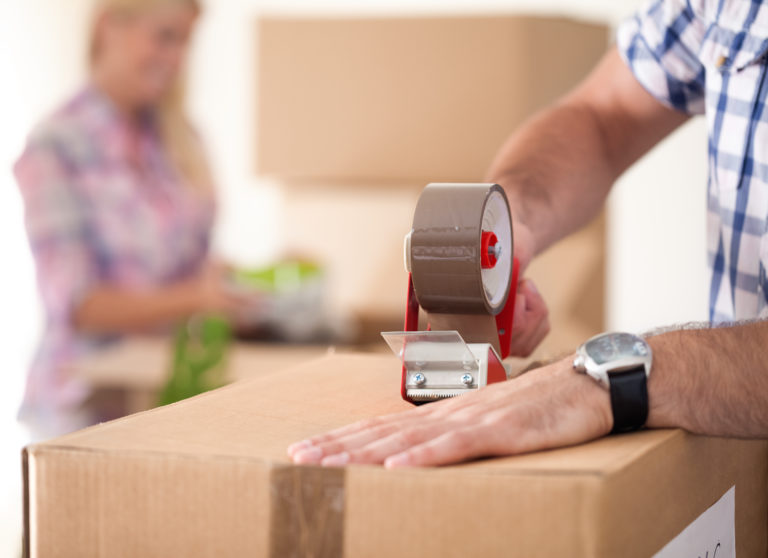Moving to a new home signals a fresh start, but packing cost-effectively into boxes can be daunting. You’re not alone in feeling overwhelmed by the prospect of sorting through your belongings and trying to fit them into a limited number of boxes. Efficient packing strategies are essential to ensure your move is as stress-free as possible. With the right packing hacks and organizational tips, you can transform the packing process into a manageable, even satisfying task.
Organization is key when preparing for a move. You lay the groundwork for a smoother packing experience by decluttering and categorizing your items. Essential packing strategies, such as using quality packing materials and labeling boxes clearly, can save you from headaches on moving days. To make the process less overwhelming, consider packing an essentials bag, much like you would for a short trip, including clothes, toiletries, and important documents, to keep them within easy reach throughout the move.
Moreover, efficient packing isn’t just about speed; it’s also about ensuring the safety and easy accessibility of your belongings. Employing specific techniques, like packing dishes on their sides and using suitcases for bulky items, can maximize space and minimize damage. To add another level of organization, take photos of the contents and the setup of complex items before disassembling them. These precautionary steps help you to keep track of your possessions and facilitate a more organized unpacking process in your new home.
Getting Started: Decluttering and Organization
Before packing for a move, reducing the amount of items you have to pack is critical, as is organizing what remains for a fluid transition. A systematic approach to decluttering and organization can save time, reduce stress, and ensure that only necessary items make it to your new home.
The Art of Decluttering
Begin the decluttering process by tackling one room at a time. Create clear categories such as keep, donate, discard, and maybe. Be methodical in evaluating items; keep only what you use, need, or love. Downsizing your belongings is more than purging; it’s about making intentional decisions that align with your future lifestyle and space.
- Keep Essential items used regularly or have significant sentimental value.
- Donate: Items in good condition that no longer serve your needs can be given a new life elsewhere.
- Discard: Items that are broken, worn out, or otherwise unusable should be responsibly disposed of.
- Maybe: Uncertain items; reassess these after the initial sort-out to make final decisions.
When decluttering, focus on high-clutter areas like closets and storage areas where unused items often accumulate. Remember, less to pack means less to unpack.
Organization Strategies for Packing
Effective organization strategies can streamline the packing process and maintain organization throughout the move. Start by accumulating the necessary packing supplies, including boxes, packing tape, bubble wrap, and markers.
- Use different box sizes for other items: small boxes for books, medium for kitchen items, and large for linens and pillows.
- Label each box with its designated room and a brief list of contents for easy identification.
- Color-code labels to quickly recognize which boxes belong in which rooms.
- Keep a detailed inventory list to track what you’ve packed, providing additional organization and control.
For essentials, pack an “open first” box with items you’ll need upon arrival, such as toiletries, a change of clothes, and basic kitchenware. Ensuring you have easy access to these necessities will make the transition smoother.
Packing Essentials: Materials and Techniques
Before packing your belongings for a move, it’s important to familiarize yourself with the essential packing materials and the various techniques for packing different items safely and effectively.
Choosing the Right Packing Materials
For a successful move, you’ll need a variety of packing materials. Begin with sturdy boxes in multiple sizes, which’re fundamental for transporting your items. Ensure you have enough packing tape to seal these containers securely. Use bubble wrap and packing paper to protect fragile items, and keep blankets and towels on hand for additional protective layers. Consider investing in specialty boxes like dish barrels or wardrobe boxes for certain items.
- Boxes: Small for books, medium for general items, large for lighter objects.
- Packing Tape: Heavy-duty tape for security.
- Bubble Wrap: Essential for fragile items.
- Specialty Boxes: For clothes, dishes, and other specifics.
Packing Techniques for Different Items
For clothing, your approach may vary. Folding clothes and placing them in suitcases or wardrobe boxes is efficient. However, rolling clothing items can save space and reduce wrinkles. When packing fragile items, use bubble wrap or packing paper to wrap each item individually before placing them in a sturdy box. Fill empty spaces with towels or clothing to prevent items from shifting.
- Fragile Items:
- Wrap individually with bubble wrap or packing paper.
- Use dish barrels and add protective layers between items.
- Clothing:
- Roll to save space and prevent wrinkles.
- Pack in wardrobe boxes or suitcases.
For packing efficiently, fill any container to prevent collapsing but avoid overpacking to keep weight manageable. Be sure to label boxes clearly with contents and room destination. This helps with organization and ensures carefully handling boxes with delicate items. Use protective materials such as blankets to wrap furniture and larger items.
By selecting the right materials and employing effective techniques, you can pack your belongings to minimize the risk of damage and make unpacking at your new home much smoother.
Strategizing Your Move: From Planning to Unpacking
A stress-free move hinges on a meticulous plan and effective unpacking strategies. Keep these stages well-structured for a smooth transition.
Creating an Effective Moving Plan
Plan and create a detailed moving checklist to ensure a streamlined move. Begin by inventorying your belongings to keep track of what you have. Utilize this list to identify non-essential items for early packing. Contact local businesses or check online marketplaces to acquire free moving boxes and eco-friendly storage containers.
- Eight Weeks Before Moving Day:
- Gather moving supplies: heavy-duty packing tape, bubble wrap, and cardboard boxes.
- Color code or label boxes for each room.
- Consider selling, donating, or discarding items you don’t need.
- Four Weeks Before Moving Day:
- Confirm arrangements with moving companies.
- Disassemble furniture that doesn’t fit through doorways.
- One Week Before Moving Day:
- Pack a bag of essential items for easy access.
- Pack smart by wrapping electronics securely and using wardrobe boxes for clothing.
Loading and Unpacking Tips
Expertise from professional movers can protect heavy items during loading. If you’re moving without movers‘ help, remember to load the heaviest boxes first and distribute weight evenly in the truck. To unpack, tackle one room at a time with a manageable approach, and start with the most essential spaces, such as the bedroom and kitchen.
- On Moving Day:
- Guide movers for efficient loading and to ensure your most important items are accessible.
- Take photos of electronic setups before disconnecting them.
- Upon Arrival:
- Open boxes with essential items first for immediate comfort.
- Assemble and arrange large pieces of furniture before unpacking smaller items.
You’ll enjoy peace of mind with a clear strategy during your next move.





